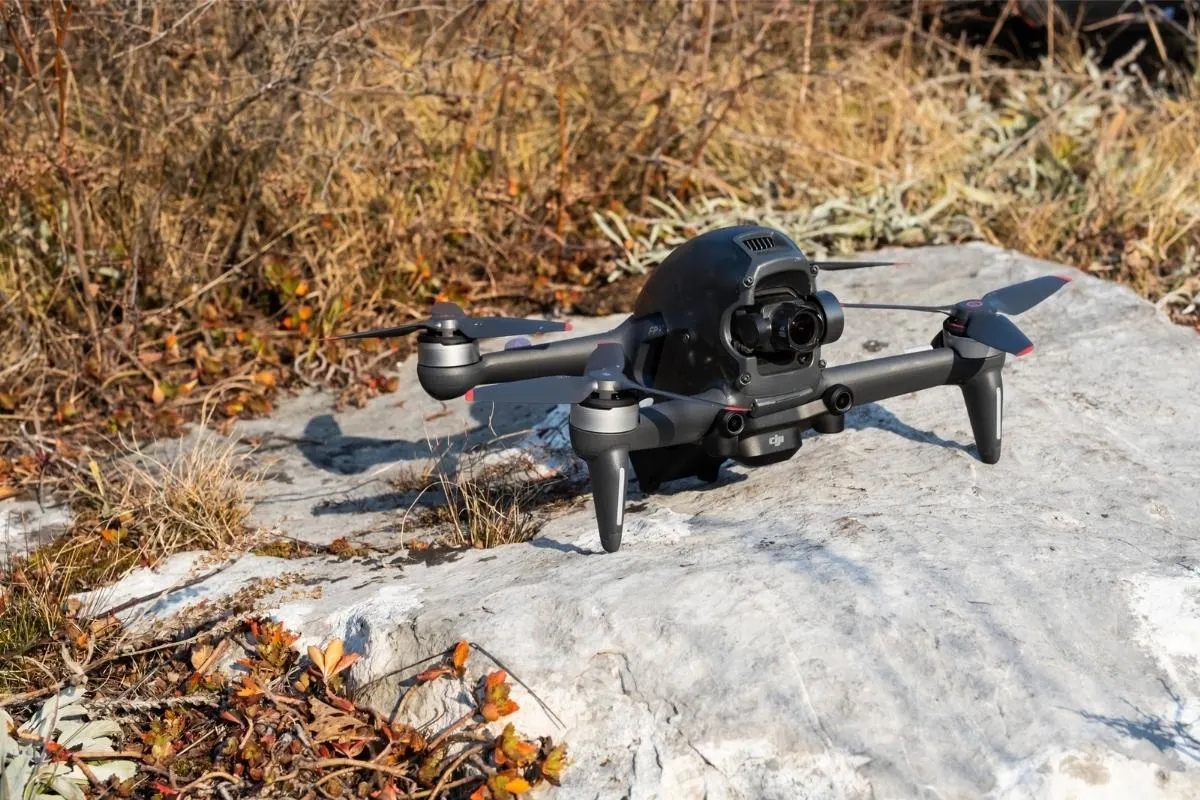Introduction
Welcome to the exciting world of DJI FPV drones!
It offers an immersive flying experience, allowing you to see the world from a whole new perspective.
Familiarize yourself with its features, specifications, and flight modes to make the most of your flying experience.

Preparation is the key to success when it comes to flying a DJI FPV drone.
Before taking off, its important to go through a thorough pre-flight checklist.
Once youve completed the pre-flight preparations, its time to take off and hover.
Mastering the basics of takeoff and hovering is essential for a smooth flight experience.
Execute daredevil flips and rolls, fly through challenging obstacles, and capture breathtaking footage with precise control.
Landing the DJI FPV drone is a critical skill to master.
Its not uncommon to encounter challenges and hiccups while flying the DJI FPV drone.
We will provide solutions to common issues such as connectivity problems, signal interference, and emergency situations.
So, get ready to elevate your aerial adventures with the DJI FPV drone.
Lets embark on this thrilling journey together!
First and foremost, lets delve into the design and build of the DJI FPV drone.
It features a sleek and aerodynamic design that maximizes stability and reduces drag, enabling high-speed flight.
The quadcopter configuration with four powerful brushless motors provides the necessary propulsion for agile maneuvers and thrilling acrobatics.
A key feature of the DJI FPV drone is its high-definition imaging system.
The GPS module ensures precise positioning, allowing for accurate and stable hovering.
The obstacle sensing system detects and avoids obstacles in real-time, reducing the risk of collisions.
To provide an immersive flying experience, the DJI FPV drone includes the FPV Goggles V2.
Understanding the DJI FPV drones features, specifications, and flight modes is crucial to unlocking its full potential.
Its also crucial to inspect the batteries for any signs of damage or wear.
Next, examine the DJI FPV drone for any physical damage or loose components.
Check that all propellers are securely attached and not damaged.
Look for any cracks or deformities on the frame or landing gear.
Also, inspect the gimbal and camera assembly for proper alignment and functionality.
Check all the cables and connectors for any signs of wear or damage.
This will allow you to access and control the drones various parameters and flight modes.
Its important to have a stable and reliable connection for a smooth flying experience.
see to it that both the drone and the remote controller have the latest firmware updates installed.
Up-to-date firmware ensures optimal performance, added features, and improved safety.
Before taking off, check the weather conditions and ensure they are suitable for flying.
Avoid flying in strong winds, rain, or low visibility conditions.
Its also important to follow local regulations and guidelines for drone flight in your area.
Finally, familiarize yourself with the flight environment.
Choosing an open and unobstructed area for takeoff and landing will minimize the risk of accidents and collisions.
Aim for a smooth and controlled takeoff, gradually increasing the altitude while maintaining a stable hover.
These maneuvers will allow you to fly confidently, perform precise movements, and capture stunning cinematic shots.
Use gentle stick movements to control the speed and maintain a steady course.
Practice flying at different speeds and experiment with tilt angles to capture dynamic footage.
Once comfortable with forward flight, practice flying the drone backward using the same techniques.
Turning and Banking:
Turns and banks add fluidity and style to your flights.
To perform a turn, use the yaw stick to rotate the drone left or right.
Gradually increase the angle of the turn to execute smooth and controlled movements.
For more dynamic turns, initiate a bank by smoothly tilting the drone to the side while turning.
This technique is great for creating cinematic shots and following subjects.
Ascending and Descending:
Practice ascending and descending with your drone to explore different altitude levels.
Increase throttle gradually to ascend and decrease throttle to descend.
Maintain a steady rhythm, and be mindful of your drones position and altitude readings.
Orbiting:
Orbiting is a popular maneuver that adds creativity and complexity to your flights.
To perform an orbit, choose a point of interest and fly a circle around it.
Adjust the radius of the circle by controlling the distance between the drone and the point of interest.
Hovering Transitions:
Hovering transitions involve moving the drone from one stationary hover to another.
This maneuver allows you to capture seamless transitions between different shots and perspectives.
Remember to always maintain situational awareness, respect local regulations, and prioritize the safety of yourself and others.
Practice emergency procedures in simulated scenarios to prepare for unexpected situations.
Troubleshooting Tips
While flying your DJI FPV drone, you may encounter certain challenges or technical issues.
Heres how to reduce signal interference:
3.
Keeping the firmware and software up to date ensures optimal performance, improved features, and enhanced safety.
Conclusion
Congratulations!
Youve now learned the essential techniques and skills to successfully navigate and operate your DJI FPV drone.
Remember to always prioritize safety throughout your flying experience.
Remember, troubleshooting is part of the journey.
if you hit any issues, follow the troubleshooting tips provided to resolve them quickly and efficiently.
Now, its time to take flight and experience the thrill of piloting your DJI FPV drone.
So get out there, push your limits, and capture stunning visuals from a perspective previously untouched.